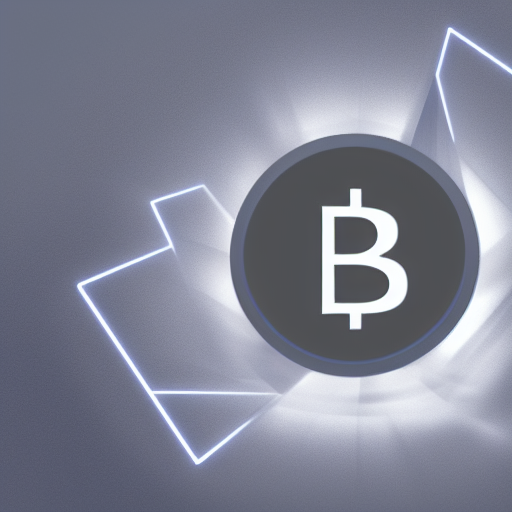Cryptocurrency has become a popular term in recent years, and one of the processes that powers this digital currency is mining. Cryptocurrency mining has become an essential part of the blockchain network that powers these digital currencies. In this article, we will take a closer look at cryptocurrency mining, including its definition, how it works, the equipment used, and its impact on the environment.
1. Introduction
Cryptocurrency mining is the process of verifying transactions and adding them to the blockchain ledger. It involves solving complex mathematical equations that validate transactions, and the person who solves the equation first is rewarded with cryptocurrency coins. This process is essential for the functioning of the blockchain network and ensures that the digital currency is secure and transparent.
2. How Cryptocurrency Mining Works
Cryptocurrency mining involves the use of specialized computer hardware and software to solve complex mathematical equations. These equations are used to validate transactions, and when the equations are solved, the transactions are added to the blockchain ledger. The person who solves the equation first is rewarded with cryptocurrency coins.
3. The Equipment Used for Cryptocurrency Mining
Cryptocurrency mining requires specialized hardware and software. The hardware used is called a mining rig, which consists of a powerful graphics processing unit (GPU) and a central processing unit (CPU). The software used is a mining software that connects the mining rig to the blockchain network.
4. The Impact of Cryptocurrency Mining on the Environment
Cryptocurrency mining requires a lot of energy, and as a result, it has a significant impact on the environment. The energy consumption required for cryptocurrency mining is equivalent to the energy consumption of a small country. This has led to concerns about the carbon footprint of cryptocurrency mining and its impact on the environment.
5. The Future of Cryptocurrency Mining
The future of cryptocurrency mining is uncertain. As the demand for digital currency continues to grow, so does the need for more efficient and sustainable mining methods. Many companies are developing new technologies that could reduce the energy consumption required for cryptocurrency mining and make it more sustainable.
6. Conclusion
Cryptocurrency mining is an essential part of the blockchain network that powers digital currencies. It involves solving complex mathematical equations to verify transactions and add them to the blockchain ledger. While it has a significant impact on the environment, new technologies are being developed to make it more sustainable.
7. The History of Cryptocurrency Mining
The concept of cryptocurrency mining dates back to the early days of Bitcoin. In 2009, the first Bitcoin transaction was made, and a few months later, the first Bitcoin block was mined. This block contained 50 Bitcoins, and it marked the beginning of cryptocurrency mining.
At the time, Bitcoin mining was relatively easy, and people could mine Bitcoins using their home computers. However, as the popularity of Bitcoin grew, so did the difficulty of mining. Today, mining Bitcoins requires specialized hardware and software.
8. Types of Cryptocurrency Mining
There are several types of cryptocurrency mining, including:
- Proof of Work (PoW): This is the most common type of mining and involves solving complex mathematical equations to validate transactions.
- Proof of Stake (PoS): This method involves validating transactions based on the amount of cryptocurrency a person holds. The more cryptocurrency a person has, the higher the chances of validating transactions.
- Cloud Mining: This is a type of mining that involves renting mining power from a third-party provider.
9. Risks of Cryptocurrency Mining
Cryptocurrency mining is not without its risks. Some of the risks associated with cryptocurrency mining include:
- Volatility: The value of cryptocurrencies is highly volatile, and this can make mining risky.
- Security: Cryptocurrency mining requires access to a digital wallet, which can be vulnerable to hacking.
- Legal Issues: The legality of cryptocurrency mining varies from country to country, and some countries have banned it outright.
10. Advantages of Cryptocurrency Mining
Despite the risks associated with cryptocurrency mining, there are several advantages to mining, including:
- Profitability: Cryptocurrency mining can be profitable if done correctly.
- Decentralization: Cryptocurrency mining is decentralized, which means that no single entity controls the network.
- Transparency: Cryptocurrency mining ensures that transactions are transparent and verifiable.
11. Conclusion
Cryptocurrency mining is the process of verifying transactions and adding them to the blockchain ledger. While it has a significant impact on the environment, it is an essential part of the blockchain network that powers digital currencies. There are several types of mining, including Proof of Work and Proof of Stake, and mining can be both profitable and risky. As new technologies are developed, the future of cryptocurrency mining looks promising.

12. FAQs
- What is cryptocurrency mining?
Cryptocurrency mining is the process of verifying transactions and adding them to the blockchain ledger.
- How does cryptocurrency mining work?
Cryptocurrency mining involves the use of specialized computer hardware and software to solve complex mathematical equations that validate transactions.
- What equipment is used for cryptocurrency mining?
Cryptocurrency mining requires specialized hardware and software, including a mining rig and mining software.
- What is the impact of cryptocurrency mining on the environment?
Cryptocurrency mining requires a lot of energy and has a significant impact on the environment.
- What is the future of cryptocurrency mining?
The future of cryptocurrency mining is uncertain, but new technologies are being developed to make it more sustainable.

